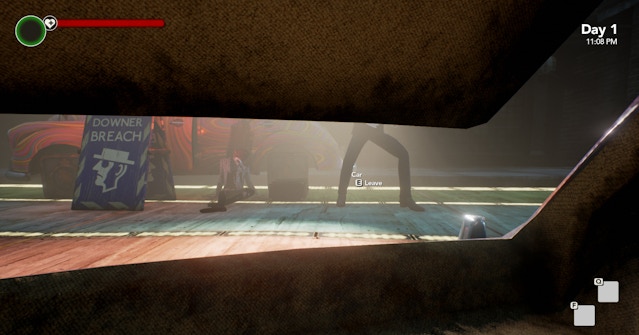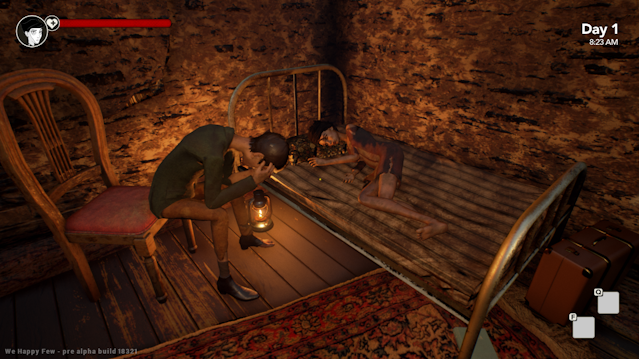I feel like I’ve had a productive day when I do something that results in big hunks of content. For example, the other day we had a recording session for a soldier. We got 180 lines recorded in an hour. Since we’d scheduled two hours, I had to scramble to come up with some other stuff for our actor to record.
However, I’m also responsible for lore. On Monday, Whitney asked me for some ideas for posters and things to flesh out the Garden District. The easy way to do this would be to repeat something you already know: a poster promoting Joy, for example, or another war poster. The harder and better thing to do is to show you something you didn’t know. In this case, it was, “What is it like for the Wastrels to come off Joy?” Now there’ll be a painting that tells you something about that. And a painting that’s the flip side of that: what proper decent Wellies do when they’re confronted with the awkward past. Sarah and I had fun coming up with that one.
And, I wrote three editorial cartoons from some sort of samizdat dissident paper. Who knew there were ever dissidents?
I sometimes wonder where my day goes. Something like “think of five ideas for the art team” can take an hour or more. We are also coming up with a new game mode. But what to call it? The names of the modes have to communicate what they’re like while being of the game world -- for example Wakey Wakey for the mode where you wake up after death, and We’ve Come to the End of Our Time for permadeath mode. See if you can guess what the middle mode is from the following rejected trios of game mode names:
Die Another Day
You Only Live Twice
Dr. No
As the World Turns
General Hospital
One Life to Live
But Soft, What Light from Yonder Window Breaks
Double, Double, Toil and Trouble
To Be, Or Not to Be
This sort of thing can also take an hour or more: a lot of thinking, and not very much writing. The best way to do it is to write down all the ideas you have, not just the good ones; a probably bad idea (Please Sir, Can I Have Another mode anyone?) can be a “bridge” to a good idea.
These things take up a lot of time, but they’re the difference between feeling that the world is deep and rich and strange, and would exist even in Arthur’s absence, or feeling that it is merely there to support gameplay.
Rest of the update here.
However, I’m also responsible for lore. On Monday, Whitney asked me for some ideas for posters and things to flesh out the Garden District. The easy way to do this would be to repeat something you already know: a poster promoting Joy, for example, or another war poster. The harder and better thing to do is to show you something you didn’t know. In this case, it was, “What is it like for the Wastrels to come off Joy?” Now there’ll be a painting that tells you something about that. And a painting that’s the flip side of that: what proper decent Wellies do when they’re confronted with the awkward past. Sarah and I had fun coming up with that one.
 |
| You can hide in car trunks! |
I sometimes wonder where my day goes. Something like “think of five ideas for the art team” can take an hour or more. We are also coming up with a new game mode. But what to call it? The names of the modes have to communicate what they’re like while being of the game world -- for example Wakey Wakey for the mode where you wake up after death, and We’ve Come to the End of Our Time for permadeath mode. See if you can guess what the middle mode is from the following rejected trios of game mode names:
Die Another Day
You Only Live Twice
Dr. No
As the World Turns
General Hospital
One Life to Live
But Soft, What Light from Yonder Window Breaks
Double, Double, Toil and Trouble
To Be, Or Not to Be
This sort of thing can also take an hour or more: a lot of thinking, and not very much writing. The best way to do it is to write down all the ideas you have, not just the good ones; a probably bad idea (Please Sir, Can I Have Another mode anyone?) can be a “bridge” to a good idea.
These things take up a lot of time, but they’re the difference between feeling that the world is deep and rich and strange, and would exist even in Arthur’s absence, or feeling that it is merely there to support gameplay.
Rest of the update here.
